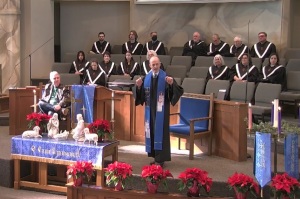Expert: Spinal Repair from Stem Cells Not Surprising
A Christian Bioethics scholar said that the newly published report on the use of embryonic stem cells to help repair damage spinal cord in rats is not surprising and that adult stem cells have shown greater results in humans.
“It is important to recognize that research has been going on in rats with both adult stem cell research and embryonic stem cell research for a number of years, and that research has already advanced beyond rats to the human sphere using adult stem cells,” said John Kilner, president and C.E.O. of the Center for Bioethics & Human Dignity (CBHD), to The Christian Post on Wednesday. “[Research reports] already show that there have been even more success with the use of adult stem cells that moved beyond researching rats into humans.
“Basically the point is: I don’t think anyone should be surprised that we would be able to accomplish some stem cell treatments in rats using adult stem cells and using embryonic stem cells.”
On Monday, scientists from John Hopkins University published findings from their research on the use of embryonic stem cells to bridge damaged spinal cords and re-grow the circuitry needed to move muscles in partially paralyzed rats. The findings is the first in a long series of steps that scientists hope will eventually lead to the repair of nerve-destroying illnesses such as Lou Gehrig’s disease or from spinal cord injuries.
Stem cells are undifferentiated cell that give rise to other cells of the same type or from which specialized cells such as blood cells develop. Embryonic stem cells are basically “blank slate” and can develop into any tissue under the right biochemical conditions. However, human embryonic stem cell research is controversial because it requires the destruction of the embryo in order to use the stem cells.
“The question becomes: ‘Are both of these avenues ethical avenues to pursue?’” said Kilner referring to the use of embryonic versus adult stem cells. “Normally, pursuing medical goals via several means is better than using just one of those mean unless some of those means themselves are unethical. That is the problem we have with stem cell research. There are many ethical sources of stem cells but the one source that is not ethical is taking human beings at the earliest stage of development, at the embryonic stage, and destroying them in order to take the cells.”
Embryonic stem cell research has also been featured in headlines around the world as disgraced South Korean cloning scientist and embryonic stem cell proponent Hwang Woo-suk faced trial on Tuesday for charges of fraud and embezzlement in a scandal. Once regarded as an international stem cell pioneer, Hwang has been dismissed from his position as a professor at Seoul National University for false claims in advances on embryonic stem cells.
Kilner anticipates that as a result of the new report, some scientists will be encouraged to use embryonic stem cells in their research.
“The more research done in animals showing that there is a second avenue to pursue for curing and treating adult spinal cord injury, then the more some people will want to pursue both embryonic and adult trials in humans,” said Kilner. “So I would anticipate that this will increase the calls from some quarters for more efforts in humans using embryonic stem cell research.
“And that would be unfortunate.”




























